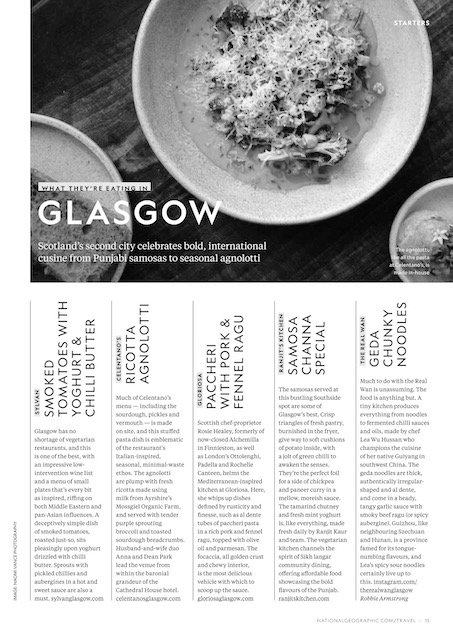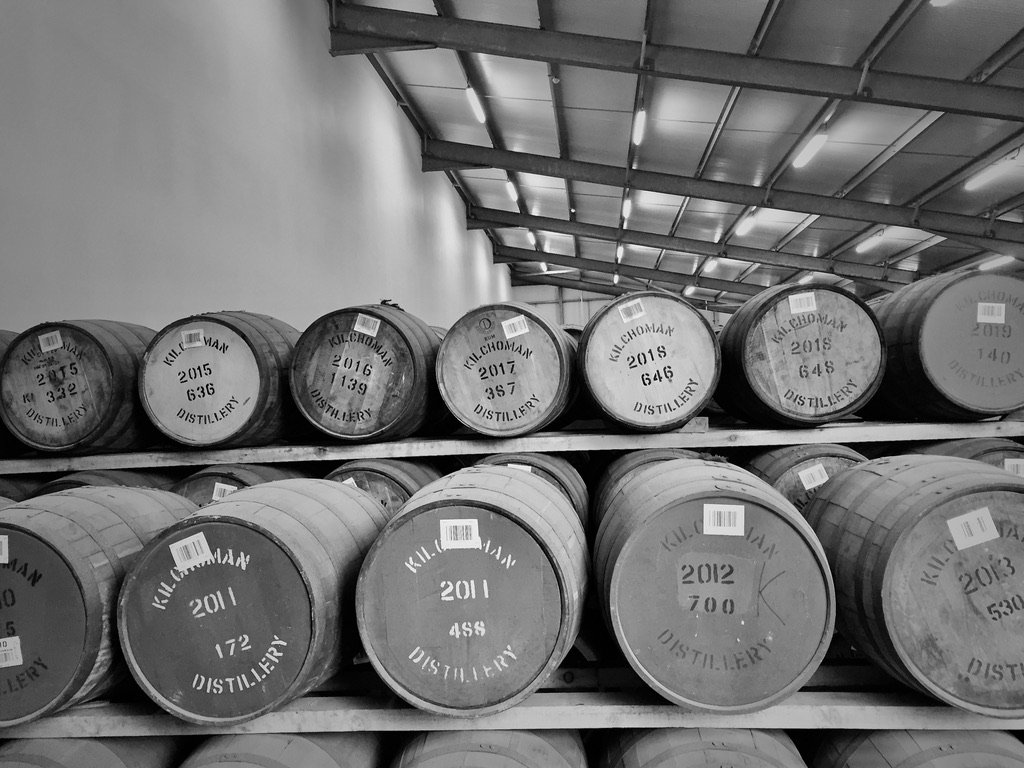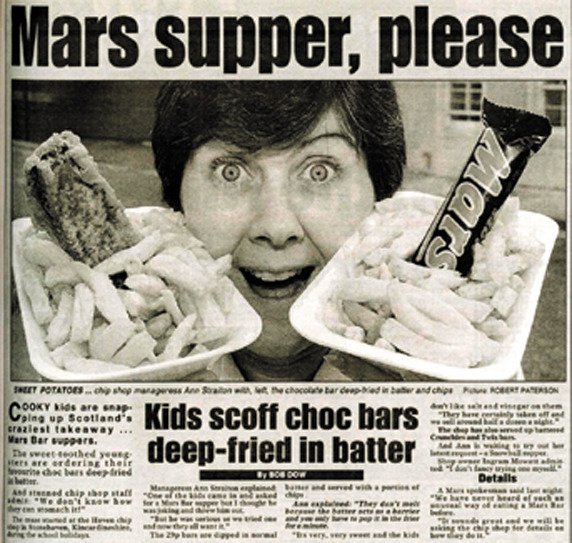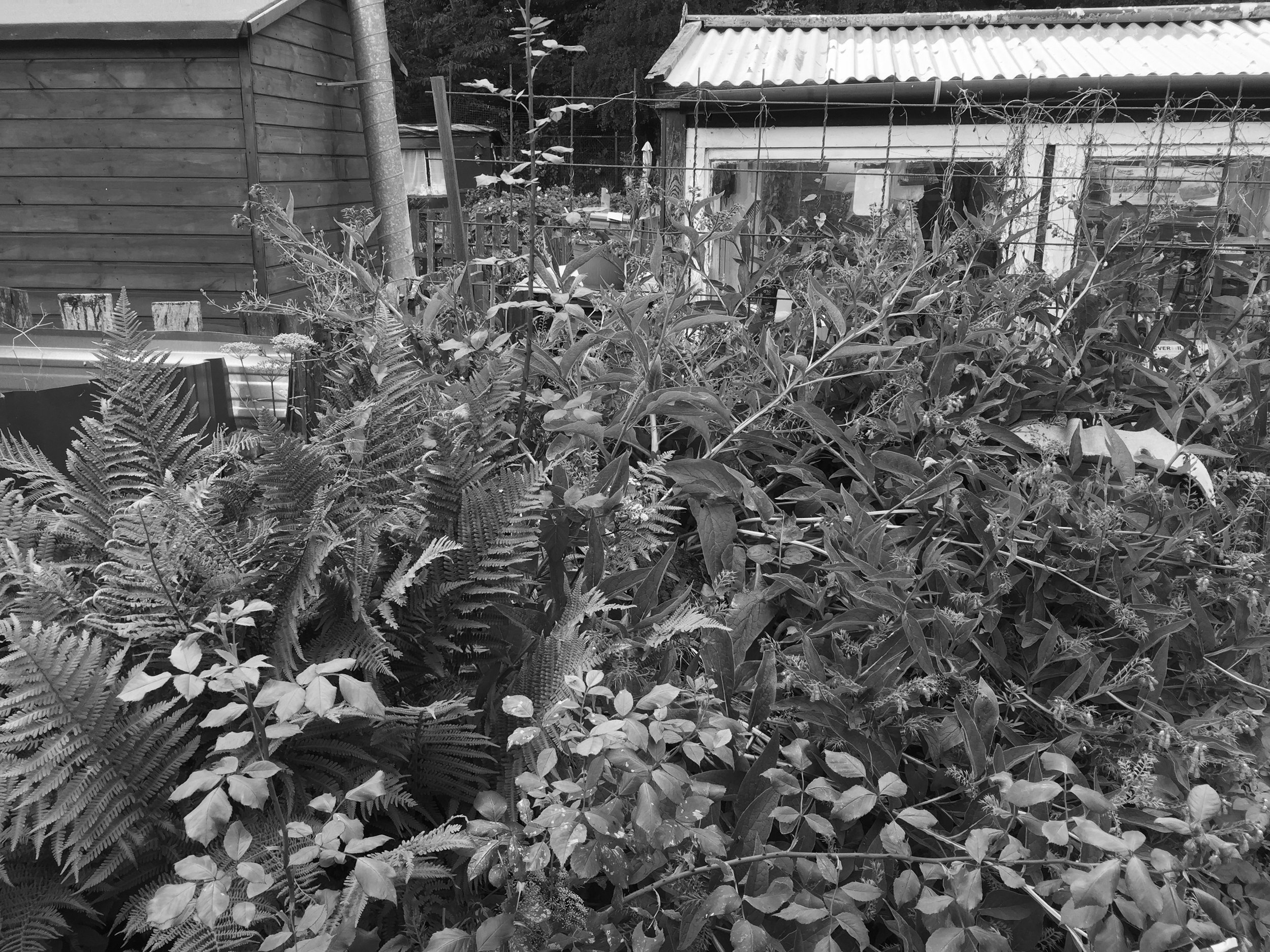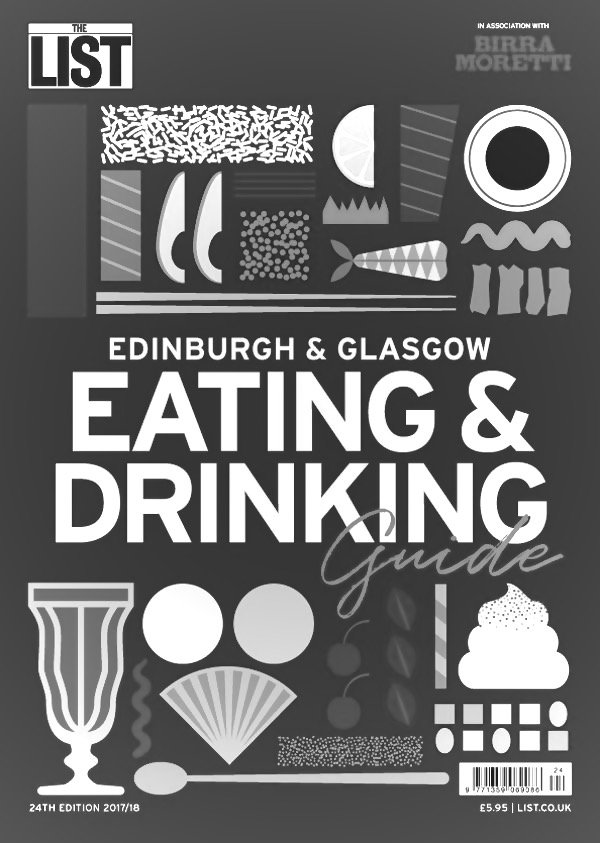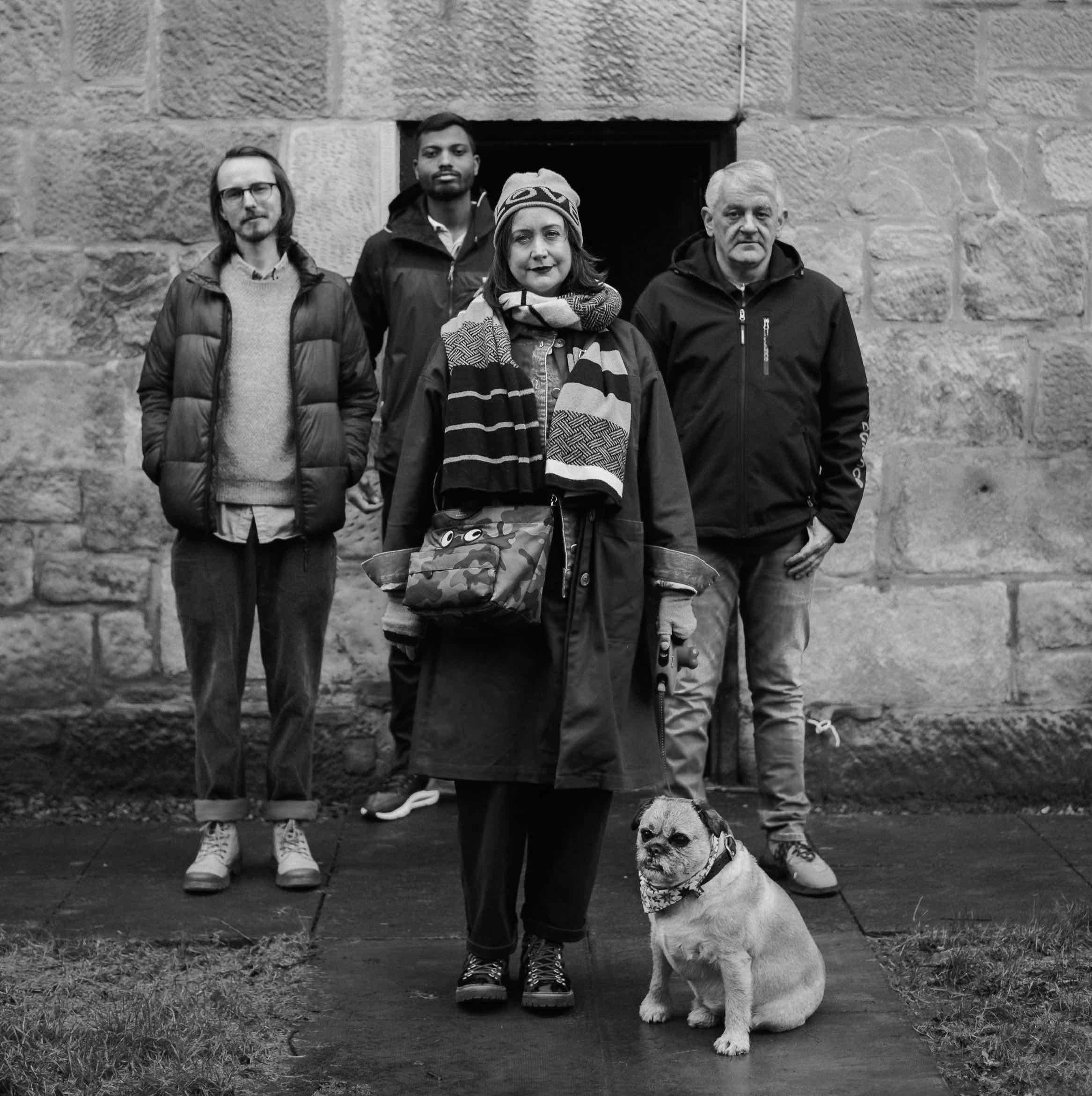The Guardian
“On a sunny spring morning under the shadow of the Erskine Bridge on the outskirts of Glasgow, it’s mainly mundane objects that the two have pulled out the water: the end of a shovel; a bracket; an old motor engine; and a road sign. Then, a few hours in, Cole pulls out the slide part from a replica handgun – by far the most exciting find of the day. His dad, Alec, often finds knives. He says: ‘I found one last week. It was the last cast in before everyone tidied up their mess – I pulled out a flick knife. I was in utter shock. I found a gun at Dalmarnock Bridge once and nearly passed out – I was that excited about it,’ he adds – with a face that says he still can’t quite believe it.”
Read the article and see Katherine’s pictures here.
National Geographic
What They’re Eating in Glasgow
Six of Glasgow’s best dishes, from Gloriosa’s paccheri with pork ragu to the Real Wan’s chunky geda noodles.
“Glasgow’s food scene, like its denizens, is convivial, generous and bold. While fine dining restaurants once lived in the shadow of Scotland’s capital, today Glasgow is home to Michelin-starred opulence, stripped-back Mediterranean modernism and cheap eats alike. You can eat everything from ornate plated curries to kebabs cooked over coals, choose from Kurdish falafel or Punjabi thali, and seek out vegan tacos, regional Chinese cuisine and more. Come for the food, stay for the people.”
Read the full article here.
Vittles
Neofoodalism: The Marquess and the Market
Why a food venue on the Isle of Bute raises serious questions about neo-feudalism, the merits of aristocratic altruism, and the limits of land-reform policy in Scotland. It was written and published against the backdrop of a new Land Reform bill – and a growing realisation that land ownership is now more concentrated in rural Scotland than ever before, despite two decades of reform.
“Standing in the way of both food and land reform policy is the fact that around 433 private landowners own over half the private land in rural Scotland according to research by land-reform campaigner Andy Wightman. This unequal distribution of land has its roots in the Highlands Clearances, during which the predominantly Gaelic-speaking populations were forcibly evicted from the Highlands and islands to make way for sheep farming between 1750 to 1860. Since then, expulsion, landlordism, enclosures, and aristocratic field sports have all changed the relationship Scotland’s people have with their land. This bizarre state of affairs means that, according to Wightman, ‘Scotland has the most concentrated pattern of land ownership in Europe’, which dictates how people live, eat, and interact with the land. How can Scotland really become a ‘Good Food Nation’ with a neo-feudal oligarchy at the helm of its rural land?”
Read the full article here.
The Scotch Industrial Complex
An exploration of the contradictions and complexities that lie at the heart of whisky production, the UK’s biggest food & drink export. Using the arguments surrounding terroir as a way of examining marketing and PR campaigns, mass-production of barley, and the automation of distillation, I argue that crucial questions are seldom asked in the coverage of Scotland’s national drink, and the ways in which industrialisation has impacted the people and places where whisky is produced.
“It’s here where smaller distilleries retain inherent value and remain markedly different in a space crowded by conglomerates. While a Kilchoman may not be intrinsically better than a Caol Ila, a working farm distillery benefits a small island in a way that a whisky factory does not. Production methods might be standardised today, but through job creation in rural areas, support of local farmers, a fairer redistribution of income, and pioneering, environmentally friendly, transparent distillation methods, independents prove that another way is possible; their very existence bolsters a stronger sense of sovereignty and claws back the industry from the reach of oligopolistic control. ”
Read the full article here.
Scotland, stop selling yourself shortbread!
An in depth examination of the past, present and future of Scottish cuisine, in which I make a case for Scottish regional cuisine through the lens of F.M. McNeill’s book The Scots Kitchen. In it I dissect culinary stereotypes, a nation’s ill health, the future of Scotland’s food system and what lessons we can learn from great cookery writers such as F. Marian McNeill.
“The learnings from The Scots Kitchen do not exist in a historical vacuum. The political undercurrent of the book reflects McNeill’s drive to champion and reinforce a strong sense of Scottish identity and culture based on its history, food, beliefs and religion; to send a salvo towards those who would see Scotland as just another part of the United Kingdom. At a crucial point in global geopolitics, she subtly argued that Scotland might better manage its wealth and resources on its own. Today once more we stand at a precipice; independence may offer an opportunity to fix a broken food system and tackle the inequality and poverty that lies at the heart of this nation’s ill health.”
Read the full article here.
“The problem is not just that these foods are unrepresentative of Scottish cuisine, but also that very normal Scottish foods – Scotch pie, roll and square sausage, pizza crunch – are being rebranded as somehow exceptional solely because they have been touched up to be sold in a Danish brewpub in Exmouth Market. While the food scene in Scotland is progressing apace, unshackling itself from tired old stereotypes, the media in London appears content with perpetuating the narrative that Scottish food is all about haggis, carbs and deep-frying almost anything (except vegetables).”
Read the full article here.
Noble Rot
Buckie Streak: The Story of Buckfast Tonic Wine, Scotland’s most controversial drink
I’ve been poring obsessively over the pages of Noble Rot for years, so to see my words appear in their tenth anniversary issue with a Martin Rowson illustration, and alongside a piece by Dave Broom, was an utter joy.
“As with most things vinous, the explanation for why Buckfast contains caffeine can be traced back to France. In 1863, Vin Tonique Mariani à la Coca de Perou, Vin Mariani for short, was created by a Corsican chemist named Angelo Mariani, who had read a paper by Paolo Mantegazza about the health benefits of a little-known South American shrub called erythroxylum coca. The tonic was made by extracting cocaine from coca leaves using a mixture of lime and ash, to which brandy, Claret and sugar were added. It clocked in at 10% alcohol and 8.5% cocaine extract by volume. Although not the strongest dose, it was a potent one-two combo; in the liver cocaine and alcohol form another drug, cocaethylene, said to give a more euphoric effect than cocaine on its own. A recommended dose was two to three glasses per day, halved for children, because why should adults get to have all the fun? ”
Buy issue 31 here.
Pellicle
“Plaudits aside, there is something extraordinary to be gleaned from the ordinariness of enjoying a few pints at The Laurieston. This could mean nipping in for a quick, thick pint of stout, or staying until last orders, when the ring of the bell bestirs drinkers from absorbed conversation—a summons to order final drinks and soak up the atmosphere a few moments more. The more time spent here, the more the pub’s spatial and temporal dimensions contract and expand, shifting according to the intangible energy and collective mood of its denizens.”
Read the article – and see Jonny Hamilton’s beautiful pictures – here.
“The approach here is one of exactitude and speaks to Gareth’s brewing philosophy and academic underpinnings. The beers are individual and represent Glasgow’s past, present and future. Epochal’s reinterpretation of traditional styles reflects the city’s industrial and brewing heritage. At the same time, the brewery itself forms part of the regeneration of the canal, helping to breathe new life into this post-industrial landscape.”
Read the full article, and see Jonny’s pictures, here.
Wicked Leeks
““There’s a small group of people hell bent on destroying our way of life,” says Alastair Nairn, a tenant farmer in the Cairngorms, nestled in the heart of Scotland’s whisky country. He describes the financial companies that are buying up whole estates in his area for blanket afforestation as “ruthless”, adding that farmland that once sold for £500 an acre now goes for £5,000. “Tenant farmers are being persecuted – moved off the land because they don’t own it,” he says. Nairn argues tenant farmers like him are at the sharp end of Scotland’s land market; one where pent-up demand coupled with low supply is leading to surging prices. He has two farms on secure agricultural tenancies, and another two on short term lease, but when the lease runs out on one of the latter farms this autumn, he says he will be moved off. ”
Read the full article here.
“North Glasgow’s Blackhill is at the sharp end, and Lowit has seen food insecurity ramp up recently. ‘Something that has become more and more necessary is our community larder: a help-yourself food bank that is free to all without referrals, with old supermarket food alongside food from the garden. Sadly it’s the busiest it’s ever been at the moment,’ he says. ‘Car ownership isn’t high in Glasgow – so people pay a poverty premium in public transport to buy fruit and veg, which is compounded when you consider people who have poor health, or the elderly population in Blackhill who really benefit from having the community food barra near enough that they can walk to it,’ he adds.”
Read the full article here.
“The project empowers children to plant, tend and harvest crops from the organic community garden located within the school grounds, and serves as a space that teachers can adapt according to educational needs. Stuart Low, a class teacher at St Ronan’s, says it is particularly beneficial for kids who find learning in the classroom more difficult. ‘It’s not just a garden, it’s a great place to take the kids and do other things. If they are planning to increase the size of the garden the kids can be part of the design of that,’ he says. ‘It’s a great resource for any subject – even just taking writing or reading outside or as the setting for an imaginative story.’”
Read the full article here.
The Fence
Catman Scoop
Exploring the birth of an urban legend. Greenock’s story of a Russian sailor living with a clowder of feral cats in a concrete pipe is part of Scotland’s post-industrial mythology. The liminal space occupied by the Catman was ripe territory for an examination of the role social media plays in modern folklore. I was drawn to Greenockian community spirit in a pre-viral era, and the ways in which YouTube altered the reality of a barely believable tale.
“The Catman content machine has unthreaded an integral skein in his mythology – a truth found wanting despite all the work of those claiming to seek exactly that. In video after video, we see an dissatisfactory sketch at odds with the less entertaining reality: good people looking after a vulnerable man for decades, regularly checking in on him, bringing him takeaways, and putting tins of cat food down for his companions – until one day he just disappeared. That spirit of kindness, of a community looking out for one another in spite of all the hardship – that’s the story of the Catman of Greenock I’ll be retelling.”
Read the full article here.
“My own memories of tonic wine are fused with Scotland’s troubled relationship with alcohol and its much-misunderstood reputation for violence. There was the time a friend’s brother was bottled in the face with the distinctive glass bottle – which, I will concede, justifies said violent reputation – along with all the other occasions my pals took a few too many enthusiastic swigs and proceeded to cheat on their girlfriends, slap their mates in the face, snort poppers with strangers and pass out on the ground (not necessarily in that order). I, a once-teetotal stoner, looked askance at my nullifidian friends, and in time learned to question why my country so easily laid the sins of its people at the feet of such a humble and life-giving drink.”
Read the full article here.
The List Magazine
Restaurant Reviewer: Eating & Drinking Guide
I worked as a restaurant reviewer for the List’s Eating & Drinking Guide for five years, between 2016-2021. I visited and reviewed restaurants in various sections: Scottish, Fish, Indian, Asian, as well as bakeries and cafés. This bolstered my understanding of the city’s food scene and strengthened my knowledge of the hospitality industry.
The Sunday Times
Edinburgh Fringe Reviewer
In 2016, I worked as a Fringe reviewer for the Sunday Times online. I reviewed shows covering dance, comedy and circus across the month. I’ve also worked for The Skinny as a Fringe reviewer, and produced several live BBC Radio Scotland programmes at the Edinburgh Festival & Fringe.
Inspired improv and interaction, Steen Raskopolous: You Know the Drill
Fringe Review: Harmonious hilarity from an Irish trio, Foil, Arms and Hog: DoomDah
Fringe Review: Macabre musical meets murder mystery, The Vaudevillains
Fringe Review: Don’t bite off more than you can chew, Luke Courtier: Lunch
Fringe Review: A race you can’t win, Nazeem Hussain: Legally Brown
Greater Govanhill
“Definitions and interpretations of gentrification differ greatly. Often, the conversation focuses on its signifiers or symptoms: the overabundance of flat whites, well-heeled folks with small dogs, fixed-gear cyclists with spacers and sailor tattoos. But this comes at the detriment of another, more important discussion about the root causes of the problem – issues such as the housing crisis, lack of affordable homes, inadequate legislation, poverty and inequality. While historians have traced the process of gentrification back to ancient Rome, it was first drawn to wider attention in its current context by the British sociologist Ruth Glass in 1964, when she described the influx of the middle class into London’s working-class neighbourhoods, displacing former residents. The late architectural critic Michael Sorkin described the process as “urban renewal with a sinister twist”, and “at pains to assert its ties to the kind of city life it is in the process of obliterating.” All the while, the democratic public realm is replaced by what he described as the “theme park” of modern urban living. ”
Read the full article here.
How the Sikh Community Kept Glasgow Fed Through the Pandemic
An original idea written for the multi-award-winning Greater Govanhill magazine. I spoke to people from Glasgow’s Sikh community about how their faith motivated them to help those most in need, engage in interfaith charity efforts and put the ideals of Sikhism into practice. It was a joy to explore the diversity and kindness of this community, the beating heart of multicultural Glasgow.
“Charandeep Singh feels that the pandemic has forced him to dip deep into the concept of langar. Many places of worship were closed, but he realised that: ‘Langar is primarily about the distribution of shared meals, it doesn’t matter where it was happening.’ So by delivering seven-day food parcels of fresh and nutritious meals for people to make in their own homes, Charandeep explains the community was still practising langar together, keeping the tradition alive, and helping those most in need. They’ve also been able to build upon their relationships with the wider community and other faith groups. Last summer, as well as their base in the Guru Nanak Sikh Temple on Otago Street, they set up a temporary food bank at the Queen’s Park Baptist Church in Govanhill to meet the community need exacerbated by the pandemic, something he never thought would happen.”
Read the full article here.
TV & Social Media
BBC News, BBC Scotland, BBC Radio Scotland
Magnet Fishing
An original story, I found contributors, conducted interviews and co-produced the TV report for BBC News. Accompanying social media videos were made for Instagram, Twitter and Facebook (combined views of over 335,000), as well as a radio report for Saturday Good Morning Scotland. BBC Scotland’s Scot Squad even turned my report into a comedy sketch!
Read: The enthusiasts getting hooked on the power of magnet fishing
Listen: Magnet Fishing on BBC Radio Scotland
Glasgow Magnet Fishing on Facebook

